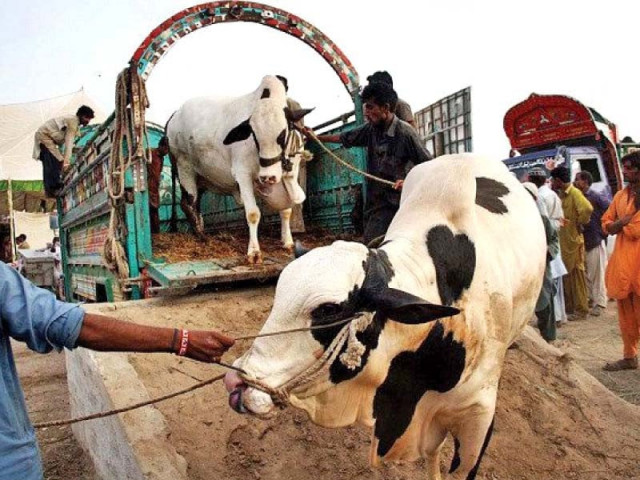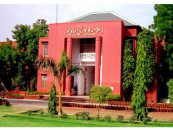Inflation leads to surge in collective sacrifice
Traders demanding high rates for animals due to rise in taxes and transportation costs

The latest victim of the inflation battering ram is the sales of sacrificial animals which have witnessed a significant decline this year.
As per reports, the prices of sacrificial animals have gone up by 25% leading to an increase in the rate of collective sacrifice. Due to the exorbitant prices of goats and sheep, consumers are resorting to contributing to the sacrifice of larger livestock animals spurring an increase in their sales.
Mubashir Hassan, a buyer at the cattle market talking to the Express Tribune, said that he had bought three goats for Eid last year at an average price of Rs 75,000 per goat but this year the price of goats of the same size was more than Rs 100,000.
In defense of the high rates being charged various sellers in the cattle markets put the blame on the government’s imposition of high taxes. They further added that an increase in fodder prices and livestock transportation costs due to the rise in petrol and diesel prices gave them no other option but to charge exorbitant rates. Muhammad Ramzan, a businessman, talking to the Express Tribune said: “Last year a sack of potatoes cost between Rs 600 and Rs 650, but this year it is between Rs 900 and Rs 1,000.” This is relevant in the livestock prices context as potatoes are more beneficial for sacrificial animals than green fodder. “Potatoes make the color of the meat white instead of yellow and also make it taste sweet,” Ramzan informed.
Read More: Butchers set expensive rates to slaughter animals
Covid cases
Apart from livestock being expensive the other worry for consumers is rising Covid cases. The government had made claims to implement SOPs in cattle markets to curb the super spreader but in practice no such measures were seen. It is business as usual for the majority of the consumers and sellers with minimal masks in sight. Even though the government has set up camps in all cattle markets to confirm if visitors of the market are vaccinated, most of these camps were devoid of any staff or government officials.
Disease
The icing on the cake is that some of the animals brought to the markets are suffering from hoof and mouth disease also known as foot and mouth disease. This is a highly contagious viral disease that affects livestock. Animals that have the disease get sores on their feet, blisters on their mouths, and water flows from the eyes and nose. According to veterinary experts, while the disease is not dangerous for humans, it is harmful for animals. Furthermore, there does not seem to be a check on the disease meaning consumers can potentially take home infected sacrificial animals.
Published in The Express Tribune, July 21st, 2021.


















COMMENTS
Comments are moderated and generally will be posted if they are on-topic and not abusive.
For more information, please see our Comments FAQ